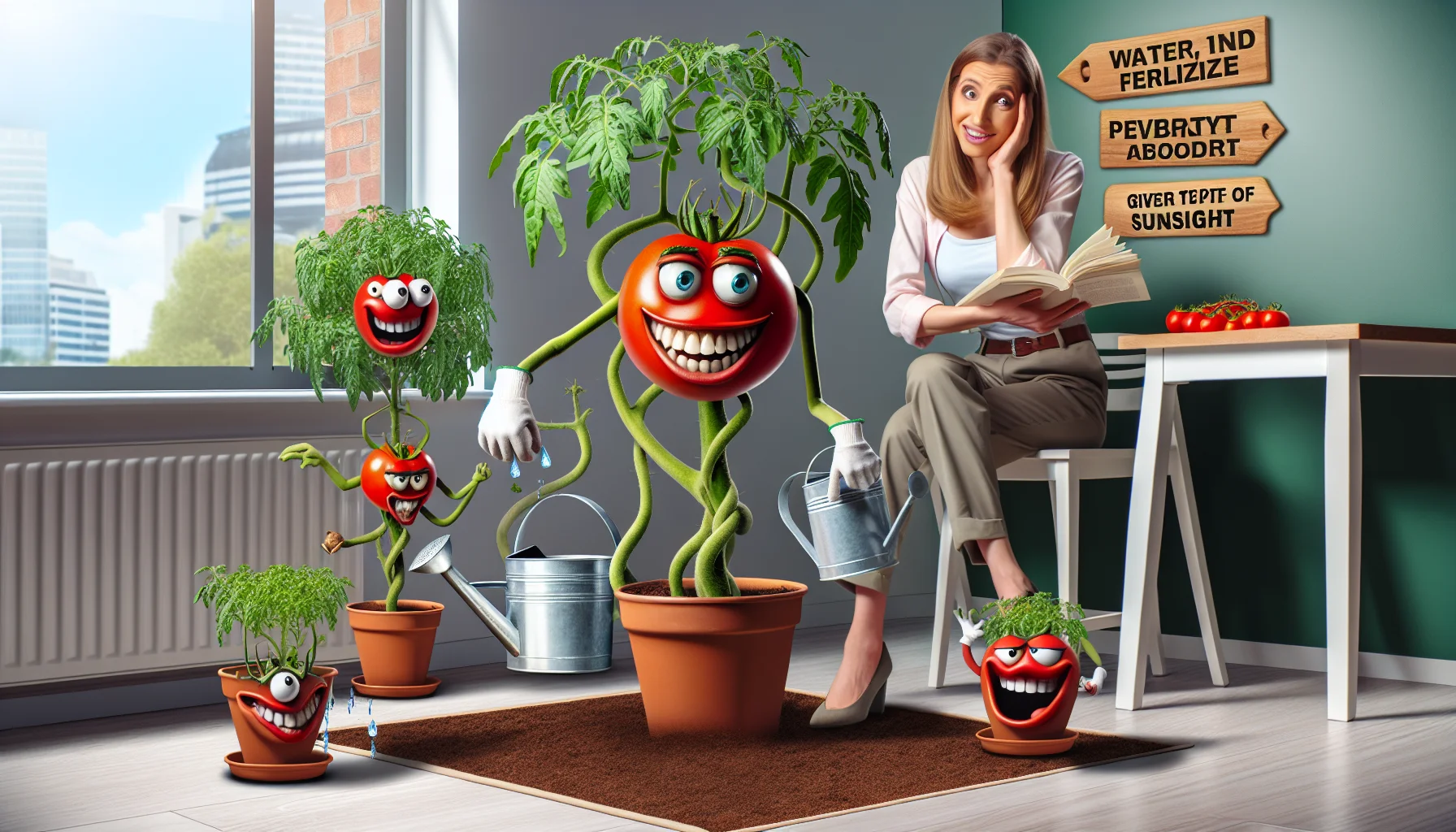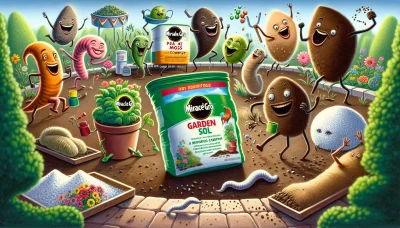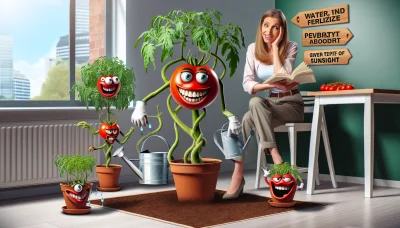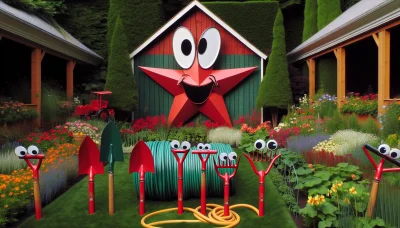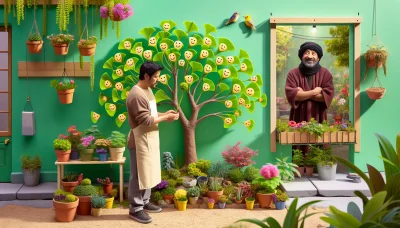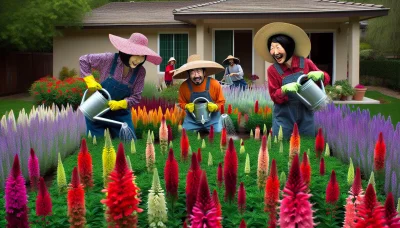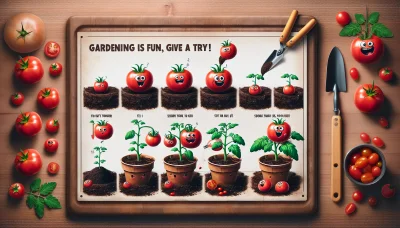How to start tomatoes indoors Quiz
Test Your Knowledge
Question of
How to Start Tomatoes Indoors: A Beginner's Guide
Starting tomatoes indoors can significantly enhance your gardening experience by giving you a head start on the growing season, allowing for healthier plants, and increasing your overall yield. This beginner's guide will walk you through the essential steps of starting tomatoes indoors, from selecting the right seeds and soil to transplanting them into your garden. Whether you're looking to grow cherry tomatoes for salads or larger varieties for cooking, this guide will provide you with the knowledge needed to successfully start your tomato plants indoors.
Choosing the Right Tomato Seeds
When it comes to indoor gardening, selecting the right variety of tomato seeds is crucial for a successful harvest. Indoor environments differ significantly from outdoor gardens, particularly in terms of space, light, and temperature conditions. Space is often limited indoors, so choosing compact or dwarf varieties that require less room to grow can be beneficial. Light is another critical factor; tomatoes require ample sunlight to thrive, so varieties that are well-suited to lower light conditions or that can flourish under grow lights are preferable. Lastly, temperature control is essential for tomato growth. Indoor gardens can often be warmer than outdoor environments, so opting for seeds that can tolerate or thrive in your home's temperature range is key. By considering these factors, gardeners can ensure a bountiful and healthy tomato crop indoors.
Supplies Needed to Start Tomatoes Indoors
- Seed starting mix
- Containers
- Grow lights
- Watering can
Step-by-Step Guide to Planting Tomato Seeds Indoors
Starting tomato seeds indoors allows you to control the environment for your seedlings, promoting healthy growth until they can be transplanted outside. Follow these steps to ensure your tomato plants get the best start possible.
- Choose a high-quality seed starting mix and fill your seed trays or small pots. Avoid using garden soil as it can contain pathogens harmful to young plants.
- Moisten the soil with water until it is damp but not waterlogged. This creates the ideal environment for seed germination.
- Sow two to three tomato seeds per pot, gently pressing them into the soil. Cover the seeds lightly with about 1/4 inch of soil, as tomato seeds need some light to germinate but also require contact with the soil.
- Space the pots or trays at least an inch apart to ensure good air circulation and to prevent mold growth.
- Cover the trays or pots with a plastic wrap or a clear plastic dome to keep the humidity high and the soil moist. Remove the cover as soon as you see the first sprouts to prevent mold growth.
- Place the pots in a warm, bright spot. Tomato seeds germinate best at temperatures between 70-80°F (21-27°C). If necessary, use a heat mat to maintain a consistent temperature and grow lights if you don't have a sunny window.
- Water the seedlings gently and keep the soil consistently moist but not waterlogged. Overwatering can drown the seeds or lead to fungal diseases.
- Once seedlings emerge and develop their first set of true leaves, thin them by cutting the weakest seedling at the soil line, leaving the strongest plant in each pot.
Caring for Your Indoor Tomato Seedlings
Indoor tomato seedlings require careful attention to grow into healthy, fruit-bearing plants. To ensure your seedlings have the best start, focus on several critical areas of care including watering, lighting, and temperature control. Following these tips will help your tomato plants thrive indoors.
- Watering: Keep the soil consistently moist but not waterlogged. Water when the top inch of soil feels dry to the touch.
- Lighting: Provide at least 6-8 hours of direct sunlight daily. If natural light is insufficient, consider using grow lights.
- Temperature Control: Maintain indoor temperatures between 65-75°F (18-24°C) during the day and not below 60°F (15°C) at night to promote healthy growth.
Transplanting Tomato Seedlings Outdoors
Transplanting tomato seedlings from indoors to the outdoor garden is a critical step in the growth process, which should be done with care to ensure the plants adapt well and thrive. The ideal time for transplanting is after the last frost date in your area, when the soil has warmed sufficiently. Before transplanting, it's essential to "harden off" the plants. This process involves gradually acclimating the seedlings to outdoor conditions over a period of 7-10 days. Begin by placing them outside in a shaded, protected area for a few hours each day, gradually increasing their exposure to sunlight and outdoor temperatures. This helps prevent shock, allowing the plants to adjust to the wind, sun, and temperature changes they will face in the garden. Once hardened off, choose a cloudy day or late afternoon to transplant, to reduce stress from direct sunlight. Dig holes larger than the root ball, space them about 2 feet apart to ensure adequate room for growth, and water well after planting to help establish roots in their new environment.
Common Problems and Solutions When Growing Tomatoes Indoors
Growing tomatoes indoors can be a rewarding experience, but it also comes with its own set of challenges. From pesky pests to nutrient deficiencies, indoor gardeners may encounter a variety of issues. However, with the right knowledge and care, these problems can be solved, leading to a bountiful harvest. Below is a table listing some common issues along with their solutions to help you achieve a successful indoor tomato crop.
| Issue | Solution |
|---|---|
| Pests (e.g., spider mites, aphids) | Use a mild soap solution to wash the plants. In severe cases, use organic pesticides or introduce beneficial insects like ladybugs. |
| Diseases (e.g., powdery mildew, blight) | Ensure good air circulation and avoid overhead watering. Remove affected leaves and apply fungicides if necessary. |
| Nutrient Deficiencies (e.g., yellow leaves from lack of nitrogen) | Use a balanced, water-soluble fertilizer every two weeks. Adjust based on specific symptoms and soil testing results. |
| Insufficient Light | Place plants in a south-facing window or use artificial grow lights for 14-16 hours a day. |
| Improper Watering | Water when the top inch of soil is dry. Avoid overwatering and ensure pots have good drainage. |
